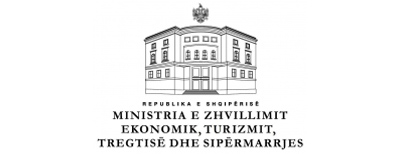About Albania
 Geography
Geography
Albania is a small country with a landmass of 28.748 sq km (about 11.000 sq miles). It is situated in the western part of the Balkan Peninsula in the southeastern part of Europe. It shares borders with Montenegro and Kosovo to the North and Northeast, Macedonia to the East and Greece to the South. To the West, is the coast that adjoins the Adriatic and Ionian Seas.
Albania has nearly 450 km (280 mi) of seacoast, with the Adriatic running from the Montenegrin border south to the Bay of Vlora, where the Ionian Sea begins.
The Adriatic separates it from Italy via the Strait of Otranto (72 km/45 mi).
The Ionian Cost is very rugged with rocky coves along the narrow coastal strip and steep mountains rising almost straight up almost much of its length. The highest point along this stretch is at the Llogara Pass, over 1.000m (3,300ft) high. Geologic activity and erosion have created many caves at the base of these cliffs, some of which were inhabited in prehistoric times. On the other hand, the Adriatic coast is a low-lying one, with large protected bays (such as those of Vlora and Durrës), which have been used as harbors since ancient times.
The rivers that flow into the Adriatic have created fertile alluvial plains on these lowlands and, at their mouths, exceptionally rich wetlands, which are home to many waterfowl and migratory birds.
Much of Albania’s surface is mountainous – the average height above sea level is 708 m, (2,336 ft) and its highest peak, Mount Korab on the Macedonian border, is 2.753 m (9,085 ft). Most of the population lives in the south-central lowlands and on the coastal plain.
The country has many rivers which originate in the high mountains and pass through steep gorges before reaching the plain and making their way to the sea. Most of the main rivers have been extensively managed, usually to generate hydro-electricity.
In Albania there are also a number of lakes. The most significant are:
• Lake Shkodra is the largest lake in the Balkans and straddles the border between Albania and Montenegro. Thousands of cormorants winter on this lake each year. It is relatively shallow and is fed by many different rivers as well as by springs, making it quite varied in its aquatic life, with various species of carp and trout in its waters.
• Lake Ohrid is shared between Albania and Macedonia in the southeastern part of Albania. Around the lake shore there are some tourist areas such as Lini, Pojska, Pogradec, Tushemisht, and Drilon. It is exceptionally deep and fed mainly by springs around the edge of the lake and on its floor.
• Above Lake Ohrid lies Prespa Lake, which is distinguished by its solitude and beautiful landscapes. In this lake there are very important breeding populations of Dalmatian and white pelicans. Lakes Ohrid and Prespa are between two and four million years old and unique species of fish have evolved in them, among them the delicious koran and belushka.
Over a third of the territory of Albania – about a million hectares (2.5 million acres) – is forested and the country is very rich in flora. About 3.000 different species of plants grow in Albania, many of which are used for medicinal purposes. The forests are home to a wide range of animals such as wolves, bears, wild boars, and chamois. Lynx, wildcats, pine martens and polecats are rarer, but survive in some parts of the country.
Partners








